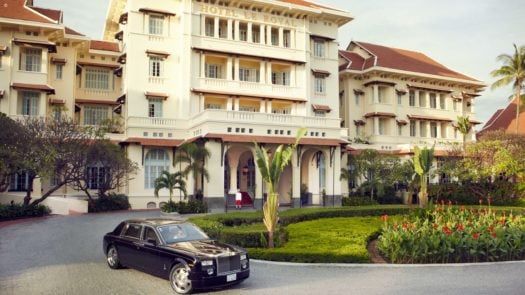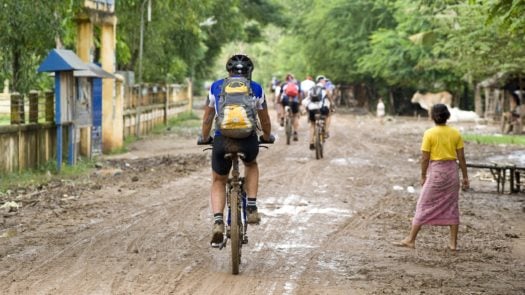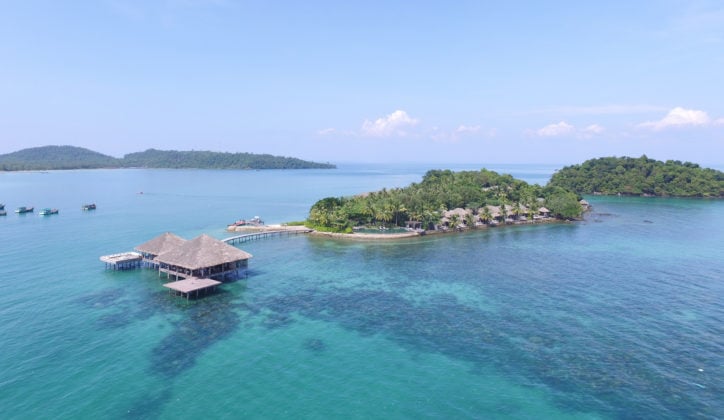Published on: November 28th, 2018
Last updated: July 27th, 2023
Cambodia is an undiscovered gem of a country, and there’s much more to it than just the Angkor temples. These majestic temples are of course worth a visit, but with everything from rural cycling tours to luxury private islands, Cambodia caters to every type of traveller.
Breathtaking landscapes and a fascinating history combine with delightful culture and welcoming people to make Cambodia a must-visit destination. Here’s our insider guide on how to explore Cambodia like a local.
Why travel to Cambodia?
Breathtaking landscapes
Characterised by green rice paddies, undulating mountains and never-ending coastline, Cambodia’s landscape is wondrous. Across the country, laidback fishing villages and pristine rainforest make you feel as though you’ve travelled back in time. Limestone mountains, hidden caves and Buddhist shrines are all waiting to be discovered between the coastal towns of Kep and Kampot. In larger cities like Siem Reap and Phnom Penh, pockets of undeveloped Cambodia exist in harmony with modern high rise buildings.
Near to the Mekong River, the Tonle Sap Lake is a captivating landmark, with fruit orchards, fish farms and floating villages all lining its banks. Beautiful coastal islands are surrounded by crystal clear waters teeming with vibrant underwater wildlife; relaxing on one of Cambodia’s shores feels like a true slice of heaven. Cambodia is a land of contrasts, and there is a breathtaking sight to behold around almost every corner.
Delightful festivals
South East Asia is renowned for its festivals, and Cambodia is no different. Khmer New Year (Choul Chhnam Thmey) is the highlight of the yearly calendar, lasting a full three days in mid-April. A national holiday in Cambodia, this festival coincides with the end of the harvest season. Farmers celebrate the new year with their families and entire villages come together for festivities. This period is one of the most heavily celebrated in the country, with Cambodians enjoying a time of relaxation before the rainy season returns.
In Siem Reap, Khmer New Year is taken to new heights. The Angkor Sangkran festival consists of Khmer New Year celebrations held in front of Angkor Wat, Bayon Temple and Elephant Terrace. Festival goers are able to enjoy traditional Khmer games, such as bas angkunh (seed throwing), chaol chhoung (twisted-scarf throwing) and leak kanséng (twisted-scarf hiding). The Khmer people love their games, so playing alongside them and dancing to traditional Khmer music provides hours of fun as well as insight into some of the country’s traditions.
Majestic temples
The mere mention of Cambodia conjures up images of staggering temples, and the Angkor Wat temple complex is the country’s biggest tourist attraction. The centrepiece of this entire complex, magnificent Angkor Wat, is completely captivating. Travellers from all four corners of the globe come to witness this structure in all its glory. Angkor Wat represents Hindu cosmology and the mythical Mount Meru, a golden mountain believed to stand at the centre of the universe. The best time to explore this temple without the crowds is during lunchtime hours. Hundreds of travellers try to catch the perennial shot of Angkor Wat backdropped by golden hues at sunrise or sunset, and the sight is truly out of this world, but lunchtime hours can mean fewer tourists.
Aside from Angkor Wat, there are many smaller temples that are also worth exploring. The smaller Angkor Thom complex houses the iconic Bayon temple. A particularly memorable and photogenic place, Bayon is covered in statues of King Jayavarman VII’s face – it’s a special site that shouldn’t be missed. Other notable temples include Ta Phrom – left deliberately unrestored, this ancient temple is covered in twisting gnarled tree roots, adding to its old world charm. If you visit during the early morning, this popular temple will be both quiet and cool. For a reasonable chance of having an entire temple to yourself, add the lesser visited Ta Nei and Ta Keo to your itinerary.
The history
Cambodia has a turbulent history – from its fascinating ancient kingdoms to its recent political turmoils, this small country has been through a lot. No trip to Cambodia is complete without an exploration into its past, and today many tourist hotspots pay homage to the country’s history. In Siem Reap, the Angkor temples are a relic of the Khmer Empire, which reigned from the beginning of the 9th century to the middle of the 15th century. A temple in the Angkor complex was built by each new ruler in an effort to outdo the last, so today the complex houses over 100 intricate temples in a UNESCO-protected World Heritage Site.
In Phnom Penh, a darker side to Cambodia’s history is revealed. From 1975 to 1979, the notorious Khmer Rouge committed a tragic genocide, killing and torturing more than 2 million Cambodians – almost a quarter of the country’s population. Today, the resilience of the Cambodian people is brought to life in Phnom Penh’s Tuol Sleng Genocide Museum and Killing Fields. Remembering those lost during the Khmer Rouge’s reign, the Tuol Sleng Genocide Museum is a Khmer Rouge prison turned educational establishment.
At the Killing Fields, a peaceful stretch of green fields known as Cheung Ek holds a harrowing secret. 17,000 of Khmer Rouge leader Pol Pot’s victims died here and mass graves are peppered throughout, so a visit to this seemingly peaceful place is a sobering experience. From exploring ancient temples to learning about Cambodia’s important past, unearthing Cambodia’s history is a worthwhile discovery.
Where to go in Cambodia
Many travellers visit Cambodia simply to see Angkor Wat, but there is much more to this wonderful country. To help you get under the skin of Cambodia, we’ve pulled together our favourite destinations to visit across the country.
Siem Reap
Cambodia’s second city Siem Reap has been put on the map by the legendary Angkor temples. These temples are definitely the showpiece of the city, with a hundred temples hidden amongst dense tropical rainforest constituting a UNESCO World Heritage Site. Beyond these world renowned Buddhist temples, Siem Reap has many other things to offer. For a less crowded temple viewing experience, venture further afield to Beng Mealea, a charming derelict structure covered in vines.
The city centre itself is a thriving hub for Khmer cuisine and culture, with food quarters and cultural performances adding to the city’s charm. In Siem Reap, travellers can get in touch with their creative side watching Cambodia’s leading contemporary circus, uncover Cambodia’s heritage at the Angkor National Museum or satisfy their cravings on a food tour. This city is a welcome oasis in comparison to Phnom Penh – offering chances to pop in and out of the town’s amazing art galleries or relax in tranquil surroundings.
Phnom Penh
Known as the ‘Pearl of Asia’ in the 1920s, capital city Phnom Penh blends the old with the new. French colonial architecture lines streets adjacent to modern skyscrapers, making the city’s boulevards a delight to explore. This cosmopolitan city is also famed for its shopping opportunities; the Central Market is a favourite with locals and tourists alike. Here, shoppers can take a punt on anything from protein-rich insects to gemstones. As you wander through the rows upon rows of stalls, the distinctive smell of fish and Khmer noodles wafting from street food vendors adds to the immersive experience.
Other must-sees in this sprawling city include the Royal Palace and, of course, the monuments that pay homage to the Khmer Rouge era. The striking Royal Palace is a collection of palatial 19th-century buildings adorned with touches of grandeur. Initially constructed in 1866, the lavish Royal Palace is the home of current ruler King Sihamoni. The Silver Pagoda that lies adjacent is equally grandiose; over 5,000 tiles cover the temple floor and a 90-kilogram Buddha sits adorned with over 2,000 diamonds.
The coast
Cambodia is renowned for its bustling cities and lush green rice paddies, but its coast is equally beautiful. In Kep, travellers can spend some restorative time relaxing on beaches or explore hidden caves and hillside temples. A former French colonial retreat, Kep is reminiscent of the 1950s; floating villages line the waterside and tourists flock here for seafood, sunsets and lazy days on the beach. Kep is a must-visit destination for seafood-lovers, as its the centre of the Cambodian crab fishing industry.
Kep offers the best of both worlds, with swathes of rolling green countryside sitting adjacent to long stretches of coastline. There’s plenty to see here, including the former residence of King Father Norodom Sihanouk, a golden hillside temple and the iconic statue of the sea overlooking Kep Beach. As you venture deeper into the countryside, you’ll also find limestone mountains and hidden caves housing Buddhist shrines. The Phnom Chhnork complex – located just outside Kampot – is particularly impressive. Incredible formations of stalactites and stalagmites surround a 7th-century brick temple shrine to Shiva in the main cavern.
For complete escape, head to the 4 Rivers Floating Lodge on the island of Tatai. Nestled in the Cardamom Rainforest, this remarkable lodge is perfectly situated for travellers looking to explore Cambodia’s natural landscapes. Laid-back globetrotters can unwind on private balconies and enjoy delicious Khmer cuisine. More active types have the choice of kayaking through mangrove forest, visiting the Tatai waterfalls by boat and jungle trekking at dawn. All are exceptional ways to make your way through this incredible countryside. To get an insight into local life, visitors can also visit remote fishing communities and the cham (Muslim) neighbourhood.
Where to stay in Cambodia
Raffles Hotel Le Royal, Phnom Penh
The illustrious Raffles Hotel Le Royal has been a Phnom Penh staple since its opening in 1929. Tucked away on a tree-lined avenue, this luxury hotel offers a welcome oasis in the heart of bustling Siem Reap. The 170 rooms here are a delectable mix of Khmer, French and art deco architecture. Relax on wonderful balconies overlooking tropical gardens, or escape the surrounding chaotic metropolis in the stunning central swimming pool. Dining on Royal Cambodian and modern French cuisine in Restaurant Le Royal or sipping sundowners in the iconic Elephant Bar is sure to transport any traveller to a bygone era.
Song Saa Private Island Resort
The private island of Song Saa is the perfect place to completely de-stress. Reached by a 45-minute speedboat ride from Sihanoukville Port, this hidden gem offers an amazing sense of seclusion. The team behind Song Saa Private Island Resort built it with the local environment in mind, so it’s been constructed entirely with reclaimed timber and salvaged wood. 24 luxury pool villas are scattered across the island, with the open plan design immersing guests in the surrounding waters.
For unrivalled luxury, the two-bedroom Royal Villa is reached by private boat and has its own pool, kitchen and indoor dining space that caters for up to 12 people. Guests here can find sanctuary with spa treatments in the heart of nature, keep active with yoga sessions or discover native plants and wildlife on snorkelling and paddle boarding excursions.
Heritage Suites, Siem Reap
Siem Reap’s Heritage Suites are close to the heart of the city and a short drive from the Angkor temples. A boutique retreat, this property offers 26 spacious suites in which to relax after a full day of exploring. The Heritage Suites seamlessly blend culture with modern comfort; suites are housed in intimate Khmer-style bungalows that are immaculately furnished with roll top baths, espresso machines and floor to ceiling windows.
Jacada’s Cambodia experiences
Private tour & sunset drinks at Angkor Thom
While Angkor Wat is the centrepiece of Cambodia’s temples, Angkor Thom is also worth exploring. A private tour of this ethereal complex allows travellers to explore the hidden nooks and crannies. To begin, you’ll travel by road to the Victory Gate leading into this complex, before continuing by foot along the city wall. En route to the Terrace of the Leper King, you’ll then stop briefly to see an imposing statue found in Bayon which is now displayed at Vihear Prampeilveng temple.
While walking through shaded parkland, ancient terraces and beautiful lakes, your guide will bring the detailed structures to life with stories of their history. After hours of exploring, sunset drinks are well-deserved – sipping your favourite cocktail as you sail through the temple’s moat at sunset is the perfect way to end the day.
Vespa foodie tour of Siem Reap
Beyond the Angkor temples, Siem Reap’s food scene is filled with culinary delights. Exploring the city by vespa is a novel way to experience its hustle and bustle and discover some of the hotspots popular with Siem Reap’s locals. On this foodie adventure, travellers can try exotic fruits, fried creepy crawlies and grilled meats, all paired with local beer, rice wine and soft drinks. These unique Cambodian specialities are sure to tantalise your tastebuds!
Cycle through the islands of the Mekong
Cycling is the preferred method of transport in rural Cambodia, and it’s a wonderful way to explore the countryside. On a relaxing cycle tour of the Islands of the Mekong, active travellers can escape the hustle and bustle of Phnom Penh. Cycling on dirt roads for around 25 kilometres is a great way to see how life differs between the city and rural Cambodia. Along the quiet back roads to the Mekong Islands, cyclists can learn about local culture as they ride through Cham Muslim communities. On the islands themselves, orchards and market gardens are a beautiful change of scenery.
Phare Circus
Cambodia is a creative country, and the youth of today are using the arts to tell stories of hardship and resilience. Based in Siem Reap and Battambang, Phare Circus is an inspiring organisation. Performers are trained at the Phare Ponleu Selpak’s training centre in Battambang, which was founded in 1994 by 9 young men returning home from a refugee camp after the Khmer Rouge reign ended.
Today, the art, theatre, music and circus school all help to transform the lives of young Cambodians. An evening at the Phare Circus feels like Cambodia’s Cirque du Soleil; Cambodian folk tales are told through gravity-defying acrobatics, traditional music and mesmerising live painting.
Discover Cambodia like a local
Feeling inspired? Talk to one of our expert travel designers to start creating your once-in-a-lifetime trip to Cambodia.








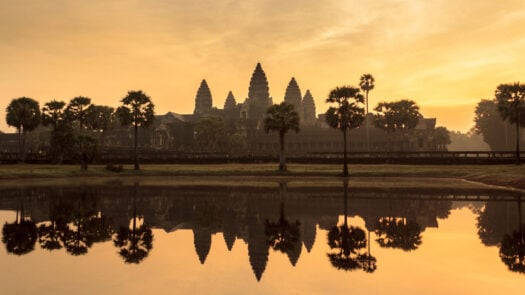

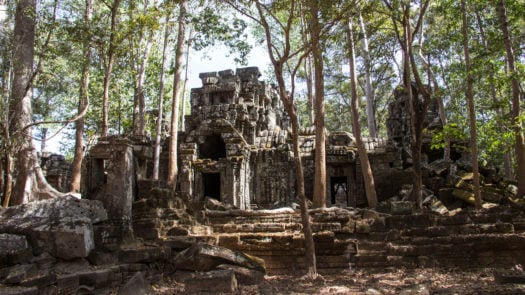





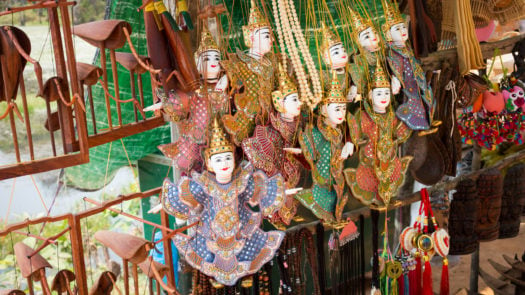
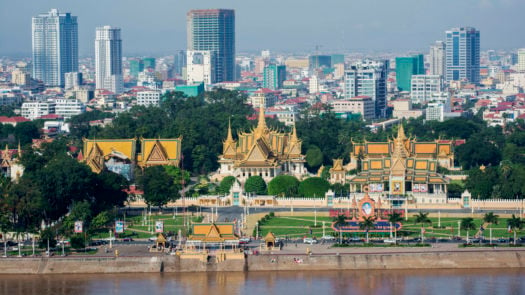
-525x295-cc.jpg)




